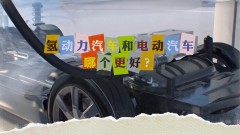Prof. Dr.-Ing. Jan-Welm Biermann
Speaker of IAC 2013
Prof. Dr. Ing. Jan-Welm Biermann, Vice Director of fka, Forschungsgesellschaft Kraftfahrwesen Aachen mbH
Prof. Biermann graduated from RWTH Aachen University in automotive engineering. He received a doctoral degree in 1981 based on an investigation of Hybrid Vehicles and took his professorship in 1988 in Vehicle Acoustics.
He has more than thirty years engineering experience at the Institute of Automotive Engineering (ika) in research and teaching. During this time a lot of Hybrid- and Electric Demonstrator Vehicles have been designed, built up and investigated under his supervision. Also in terms of Noise, Vibration and Harshness (NVH) multifarious public and industrial financed R&D projects have been carried out under his guidance in cooperation with vehicle manufacturers and suppliers worldwide.
E performance – A Demonstrator Car with Significantly Improved Crash Behaviour of the Battery System
Due to the increasing electrification of the automotive drive train the traction battery becomes one of the key components. However, today’s battery systems are both thermally and mechanically still improvable. These properties must duly be considered for a sufficient design of such systems.
Within the research project “e performance” that was funded by the Federal Ministry of Education and Research (BMBF, Germany) a battery electric vehicle was developed and built up by the Audi AG, Audi Electronics Venture, Robert Bosch GmbH, RWTH Aachen University and other partners from industry and science. Together with an innovative modular drive train it also contains Li-ion battery systems designed with respect to crash and thermal safety.
In this paper an innovative concept to improve the crash safety of the e performance electric vehicle will be introduced. Usually the crash safety of an electric energy storage system is guaranteed by encasing it in a rigid and in general heavy structure. In order to avoid such heavy battery housings a deformable battery system was developed. On the one hand this provides more deformation space for energy absorption. On the other hand this concept decreases the weight of the overall vehicle and therefore the power demand at the wheels. Due to a special shape of the so-called macro cells inside the battery the energy is deployed in several directions and gets absorbed by deformation elements.
The development process of the new Li-ion battery system will be explained starting with the idea and ending with the complete prototype. Furthermore design attributes of the system will be shown as well as the development strategy and results of the Finite Elements Analysis to optimize the crash functionality. As mentioned above, the thermal load of the battery system must also be considered since the operational cell temperatures have to be guaranteed at any time. A lower temperature level, e.g. 0°C, is critical for charging and limits the recuperation potential of the vehicle’s kinetic energy. Exceeding an upper temperature limit, e.g. 40°C, influences the lifetime and hence the total costs of the battery pack. Therefore this article also gives a short overview of the thermal requirements and limits of Li-ion batteries in general and of the used cell type in particular.
Alongside the explanations concerning the crash deformable battery system a brief overview regarding the other research activities within the project e performance is given. These are for example energy management, drive train and power electronics, thermal management, vehicle electrical system, acoustics and safety, overall vehicle architecture, body and lightweight design.















获取更多评论